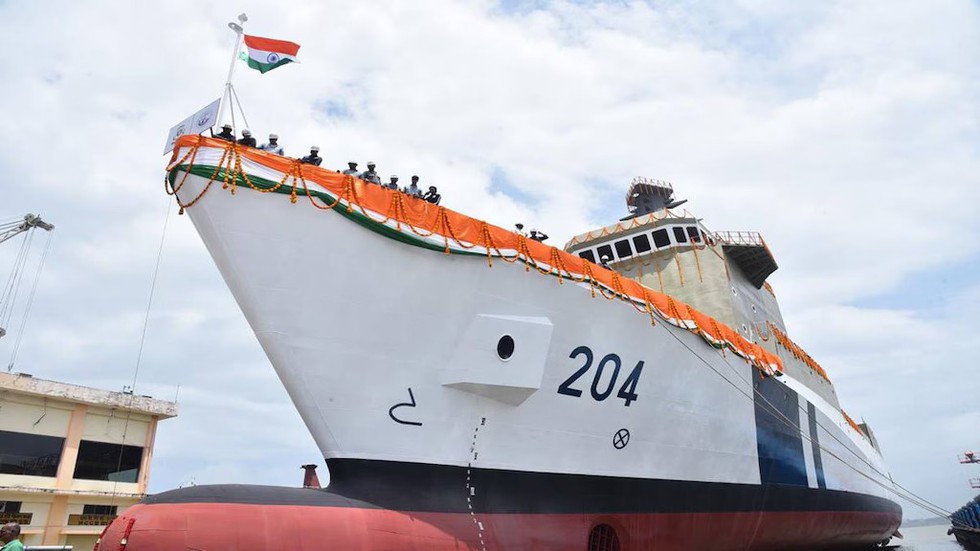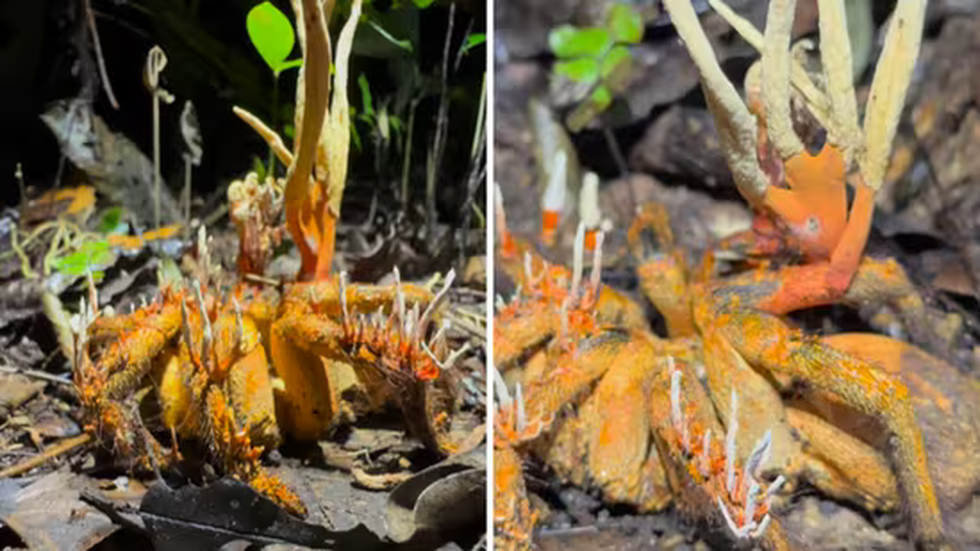
About Ramon Magsaysay Award:
- It is Asia’s premier prize and highest honor, celebrates greatness of spirit and transformative leadership in Asia.
- The Awardees, annually selected by the RMAF board of trustees, are presented with a certificate and a medallion with an embossed image of Ramon Magsaysay facing right in profile.
- From 1958 to 2008, the Award was given in six categories annually:
- Government Service: To recognize outstanding service in the public interest in any branch of government, including the executive, judicial, legislative, or military;
- Public Service:To recognize outstanding service for the public good by a private citizen;
- Community Leadership: To recognize the leadership of a community toward helping the disadvantaged have fuller opportunities and a better life;
- Journalism, Literature, and Creative Communication Arts: To recognize effective writing, publishing, or photography or the use of radio, television, cinema, or the performing arts as a power for the public good;
- Peace and International Understanding: To recognize contributions to the advancement of friendship, tolerance, peace and solidarity as the foundations for sustainable development within and across countries.
- Emergent Leadership: To recognize an individual, forty years of age or younger, for outstanding work on issues of social change in his or her community, but whose leadership may not yet be broadly recognized outside of this community.
- It is presented in formal ceremonies in Manila, Philippines on August 31st, the birth anniversary of the much-esteemed Philippine President whose ideals inspired the Award’s creation in 1957.
2. Samudra Pratap

About Samudra Pratap:
- The vessel will help to check the oil spillage on the country’s sea coast.
- The ship was launched and named as 'Samudra Pratap'.
- It is built by Goa Shipyard Limited (GSL) for the Indian Coast Guard.
- It is the first time that these types of vessels are being designed and built indigenously in India.
- Features
- It boasts a length of 114.5 meters, a breadth of 16.5 meters and a displacement of 4,170 tons. The vessel will be manned by 14 officers and 115 sailors and is equipped with state-of-the-art technology for pollution control.
- Notably, it features side-sweeping arms to contain oil spills while in motion, an advanced radar system for oil spill detection and facilities to recover and store various types of oil.
- Significance
- The vessel is a crucial addition to the Indian Coast Guard’s fleet, enhancing its capacity to manage oil spill response operations in India’s Exclusive Economic Zone (EEZ) and beyond.
3. Zombie fungus

About Zombie fungus:
- The zombie fungus, or Ophiocordyceps unilateralis, drains its host entirely of nutrients. It also fills the host body with spores, allowing the fungus to reproduce.
- It seizes control of the mind and motor functions of its host before eating away at its body.
- Cordyceps is a genus of fungi that primarily attacks invertebrates and mainly infects insects such as ants or spiders.
- The fungus is largely pantropical and primarily infects carpenter ants.
Key facts about Tarantulas
- Tarantulas are a type of large, hairy spider belonging to the family Theraphosidae.
- There are over 900 species of tarantulas found all over the world, except for Antarctica.
- They move slowly on their eight hairy legs, but they are accomplished nocturnal predators.
4. Navratna Status
- The government categorises all Public Sector Undertakings (PSUs) into three categories, namely Maharatna, Navratna and Miniratna.
- The Government had introduced the ‘Navratna’ scheme in 1997.
- Criteria for Navratna status:
- A Public Sector Unit (PSU) should be a Miniratna-I, Schedule 'A' company, should have obtained an 'excellent' or 'very good' MoU rating in three of the last five years, and must have a composite score of 60 in six performance indicators.
- It must report a net profit of more than Rs 5,000 crore for three consecutive years and maintain an average annual turnover of Rs 25,000 crore for three years, or have an annual average net worth of over Rs 15,000 crore for three years.
- Advantages:
- Financial Independence:They invest up to ₹1,000 crore without seeking approval from the central government.
- Navratna companies are also allowed to invest up to 15% of their net worth on a single project, or 30% of their net worth in a given year, subject to a cap of ₹1,000 crore.
- To incur capital expenditure on the purchase of new items or for replacement, without any monetary ceiling.
- To enter into technology joint ventures or strategic alliances.
5. Tourism and Hospitality Skill Council
About Tourism and Hospitality Skill Council:
- It is a Not-for-Profit Organization, registered under the Societies Registration Act, 1860, promoted by the Confederation of Indian Industry (CII) with inclusive representation of the Government, Industry, Industry Associations and Training Institutes across India.
- It is formed by the industry to tackle the skilling of large manpower to fulfil the industry requirements, playing a crucial role in bridging this ever-growing gap.
- THSC is now an approved awarding body under the National Council for Vocational Education and Training (NCVET).
- Mandate: It has a mandate to create a robust and sustainable eco-system for skill development in the industry, catering to all the sub-sectors of the industry, namely, Hotels, Tour Operators, Food Service Restaurants, Facilities Management and Cruise Liners.
Key points about the recent Memorandum of Understanding
- This initiative will ensure a skilled workforce to support India’s ambitions of becoming a global tourism hub.
- It is designed to upskill at least 20,000 Indian youth in tourism-relevant skills.
- Time period: 3 years
- It aims to train youth across 10 States, including Assam, Gujarat, Himachal Pradesh and West Bengal to elevate the tourism service experience for tourists.
- The program will focus on essential roles within the domestic tourism industry, such as tour guides, customer service executives, naturalists, and paragliding tandem pilots.
6. Uri-I Hydroelectric Project
About Uri-I Hydroelectric Project:
- It is an operating hydroelectric power plant located in the Jhelum River of Uri town in the Baramulla district of Jammu & Kashmir.
- It is located very near the Line of Control (LOC), the de facto border between India and Pakistan.
- The power project was commissioned in 1997 with a total installed capacity of 480 MW.
- It is owned by the Central Government, and the operating company of the plant is National Hydroelectric Power Corporation Limited (NHPC).
- The unit size of the power plant is 480 MW, having 4 units of 120 MW each.
Key Facts about Jhelum River:
- It is a river that flows in India and Pakistan.
- It is a tributary of the Indus River.
- It is the main waterway of the Kashmir valley.
- It is the largest and most western of the five rivers of Punjab and passes through the Jhelum District in the north of Punjab province, Pakistan.
- Course:
- Origin: It originates at the Verinag Spring at Anantnag, at the foot of the Pir Panjal range in the Kashmir Valley.
- It then flows via Srinagar and Wular Lake prior to entering Pakistan.
- The river makes a deep, narrow gorge on its way to Pakistan.
- It joins the Chenab River near Trimmu, Pakistan.
- Major Tributaries:
- The largest tributary of the Jhelum is the Kishanganga (Neelum) River, which joins near Muzaffarabad and enters the Punjab province, Pakistan.
- Kunhar River is the second largest tributary of the river, which connects Pakistan-occupied Kashmir (PoK) and Pakistan on the Kohala Bridge of Kanghan Valley.
- Other tributaries include the Sandran River, Bringi River, Arapath River, Watlara River, Lidder River and Veshaw River.
7. Key Facts about Musi River
About Musi River:
- It is a river that flows through the southern Indian state of Telangana.
- It is a tributary of the Krishna River in the Deccan Plateau.
- It was known as the Muchukunda River in earlier days.
- Hyderabad stands on the bank of this river, which divides the city between the old and the new.
- Course:
- It begins in the Anantagiri Hills near Vicarabad, Rangareddi district, 90 kilometers to the west of Hyderabad.
- It consists of two rivulets, Esi and Musa, which then converge into the Musi River.
- It joins the Krishna River near Wazirabad in Nalgonda district after covering a distance of about 240 km.
- Dams: Himayat Sagar and Osman Sagar are the two dams that are constructed over the river.
- Bridges:
- The river is crossed by several historical bridges, including the Purana Pul (Old Bridge), which was built during the reign of the Nizams of Hyderabad.
- The other bridges are located in Dabirpura, Amberpet Chaderghat and Uppal Kalan.
8. United Nations Security Council (UNSC)
About United Nations Security Council (UNSC):
- It is one of the five principal organizations of the United Nations (UN).
- It has primary responsibility for the maintenance of international peace and security.
- Under the Charter of the UN, all Member States are obligated to comply with UNSC decisions.
- The Security Council takes the lead in determining the existence of a threat to peace or an act of aggression.
- It calls upon the parties to a dispute to settle it by peaceful means and recommends methods of adjustment or terms of settlement.
- In some cases, the Security Council can resort to imposing sanctions or even authorising the use of force to maintain or restore international peace and security.
- Powers:
- Establishment of peacekeeping operations
- Establishment of international sanctions
- Authorization of military action through Security Council resolutions
- Members: It has 15 Members, and each Member has one vote.
- 5 permanent members known as P5, including the United Kingdom, China, France, Russia and the United States.
- The P5’s privileged status has its roots in the United Nations’ founding in the aftermath of World War II.
- They have veto powerover decisions of the UNSC.
- 10 non-permanent members: Each year the 193-member General Assembly elects five non-permanent members for a two-year term at the UNSC.
- The nonpermanent members are generally chosen to achieve equitable representation among geographic regions, with five members coming from Africa or Asia, one from Eastern Europe, two from Latin America, and two from Western Europe or other areas.
- The Security Council has a permanent headquarters at the United Nations Headquarters in New York City.
9. Rule 170 of the Drugs and Cosmetics Act
About Rule 170 of the Drugs and Cosmetics Act:
- It was introduced in 2018 to govern the manufacture, storage, and sale of medicines in the country, “specifically for controlling inappropriate advertisements of Ayurvedic, Siddha and Unani medicines”.
- The rule was introduced after a parliamentary standing committee highlighted the problem of misleading claims, and the need for the AYUSH ministry to proactively pursue the issue.
- The rule prohibits AYUSH drug manufacturers from advertising their products without approval and allotment of a unique identification number from the state licensing authority.
- The manufacturers have to submit details such as textual references and rationale for the medicine from authoritative books, indications for use, and evidence of safety, effectiveness and quality of drugs.
- The rule states that the application will be rejected if the manufacturer does not provide their contact details, if the contents of the advertisement are obscene or vulgar, products for the enhancement of male or female sexual organs, depict photographs or testimonials from celebrities or government officials, refers to any government organisation, gives false impressions, or makes misleading or exaggerated claims.
10. Pilibhit Tiger Reserve (PTR)
About Pilibhit Tiger Reserve (PTR):
- It is located in Pilibhit District, Lakhimpur Kheri District and Bahraich District of Uttar Pradesh.
- It lies along the India-Nepal border in the foothills of the Himalayas and the plains of the ‘terai’ in Uttar Pradesh.
- The river Gomti originates from the PTR, which is also the catchment of several others like Sharda, Chuka, and Mala Khannot.
- The Sharda Sagar Dam is on the boundary of the reserve.
- Vegetation: North Indian moist deciduous type.
- It has a dry and hot climate, which brings a combination of dry teak forest and Vindhya Mountain soils.
- Flora:
- It is characterized by sal forests, tall grasslands, and swamps, maintained by periodic flooding from rivers.
- The sal woodland is very dense with good natural regeneration, amounting to almost 76% of the reserve area.
- Fauna:
- It is home to a myriad of wild animals including the endangered tiger, swamp deer, Bengal florican, hog deer, leopard, etc.
Key Facts about Chital:
- The spotted deer, or chital/cheetal is a deer species native to the Indian subcontinent.
- It is the most common deer species in Indian forests.
- Distribution: It is widely distributed in Asia, especially in India, Sri Lanka, Bangladesh, Bhutan, and a small group in Pakistan.
- Habitat: Subtropical grasslands and forests
- Features:
- With a lifespan of about 20 to 30 years, it stands at about 35 inches tall and weighs about 187 pounds.
- It is a slightly reddish brown with white spots on its body.
- Only males have antlers, and their bodies are larger than females.
- Spotted Deer are social animals. They commonly occur in herds of 10 to 50 individuals.
- They mainly feed on grasses throughout the year. Their diets include herbs, shrubs, foliage, and fruits.
- Conservation Status:
- IUCN Red List: Least Concern


























































































































































.png)
.png)
.png)
.png)
.png)


.png)
.png)
.png)





.png)
.png)






.png)
.png)
.png)
.png)
.png)
.png)
.png)
.png)
.png)

.png)







.png)
.png)


.png)
.png)
.png)


.png)

.png)
.png)





.jpg)

.png)
.png)


.png)

.png)
.png)
.png)

.jpg)

.jpg)


.png)

.png)
.png)
.png)
.png)
.png)
.png)
.png)
.png)
.png)
.png)




.png)

.png)





.png)
.png)
.png)
.png)
.png)
.png)
.png)
.png)
.png)
.png)
.jpg)
.jpg)

.png)
.png)
.png)
.png)
.png)
.png)
.png)
.png)
.png)
.png)
.png)
.png)
.png)
.png)
.png)
.png)
.png)
.png)
.png)
.png)
.png)
.png)



.png)
.png)

.jpg)
.jpg)


.jpg)
.jpg)
.jpg)
.jpg)
.jpg)

.jpg)








.jpg)
.jpg)
.jpg)
.jpg)
.jpg)

















.jpg)
.jpg)







.jpg)


















.jpg)
.jpg)






























































































.jpg)
.jpg)


























.jpg)

.jpg)










.jpg)








.jpg)




.jpg)










.jpg)


















.jpg)












































.jpg)














.jpg)
.jpg)
.jpg)





.jpg)

.jpg)
.jpg)





































































.jpg)


































.jpg)
.jpg)
















































.jpg)












.jpg)


.jpg)




.jpg)
.jpg)
.jpg)

.jpg)
.jpg)
.jpg)
.jpg)

.jpg)
.jpg)
.jpg)

.jpg)
.jpg)
.jpg)
.jpg)
.jpg)
.jpg)
.jpg)
.jpg)

.jpg)


.jpg)
.jpg)
.jpg)
.jpg)
.jpg)
.jpg)
.jpg)
.jpg)
.jpg)
.jpg)











.jpg)
.jpg)





.jpg)
.jpg)
.jpg)
























.jpg)
























.jpg)









.jpg)
.jpg)







.jpg)
.jpg)









































.jpg)
.jpg)
.jpg)
.jpg)
.jpg)

.jpg)
.jpg)
.jpg)
.jpg)
.jpg)


.jpg)
.jpg)
.jpg)
.jpg)
.jpg)

.jpg)
.jpg)
.jpg)
.jpg)
.jpg)
.jpg)
.jpg)
.jpg)
.jpg)
.jpg)
.png)

.png)
.png)

.png)
.png)
.png)
.png)


.jpg)
.jpg)

.jpg)
.jpg)
.jpg)

.png)
.png)
.png)
.png)
.png)
.png)
.png)

.png)
.png)
.png)
.png)
.png)
.png)
.png)
.png)
.png)
.png)





































































-min.png)



.png)




.png)








































